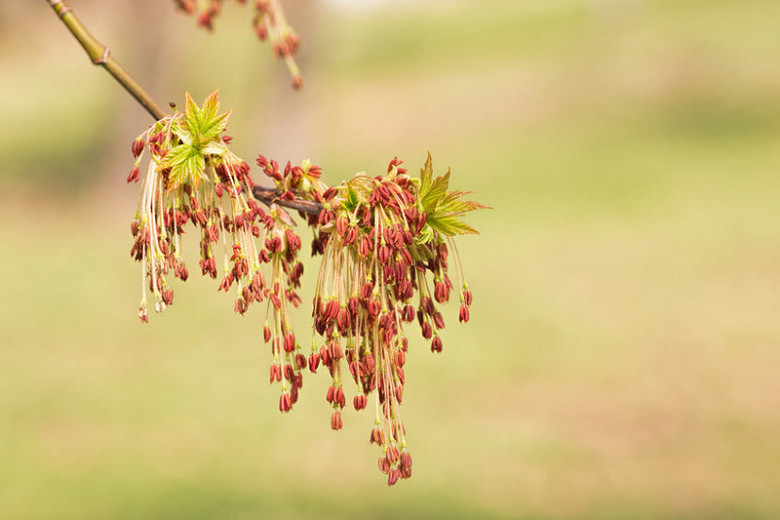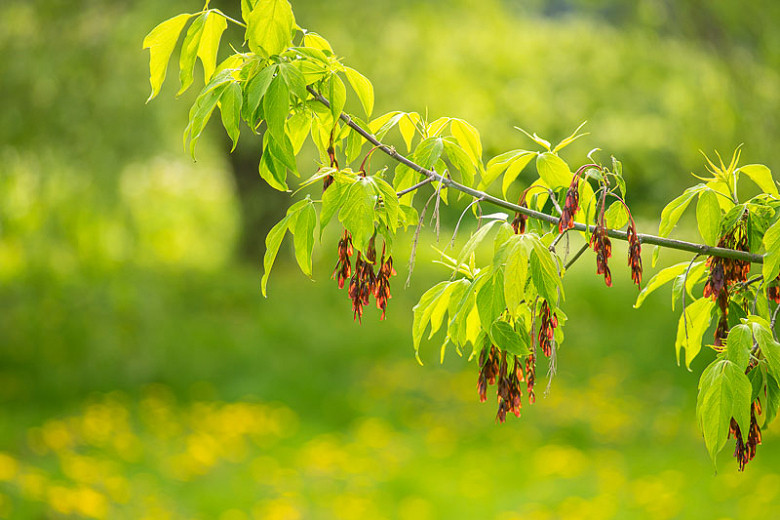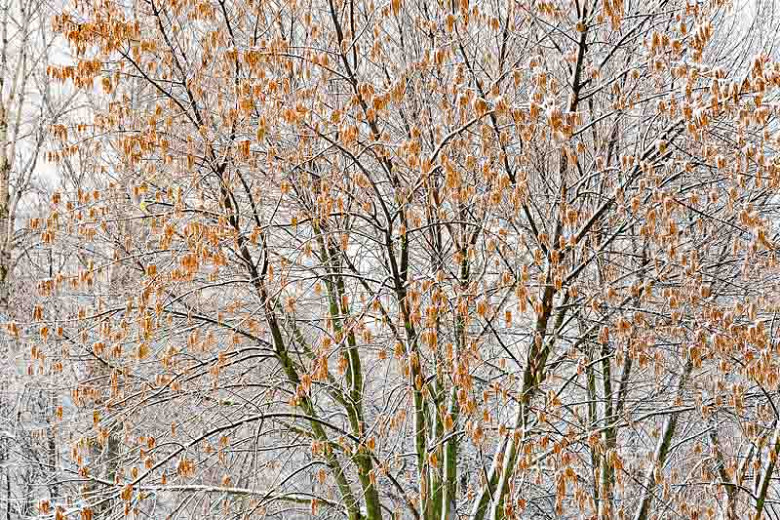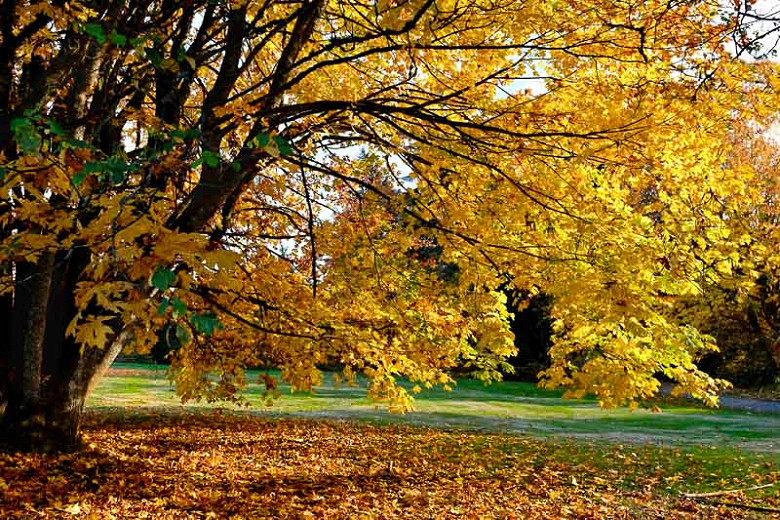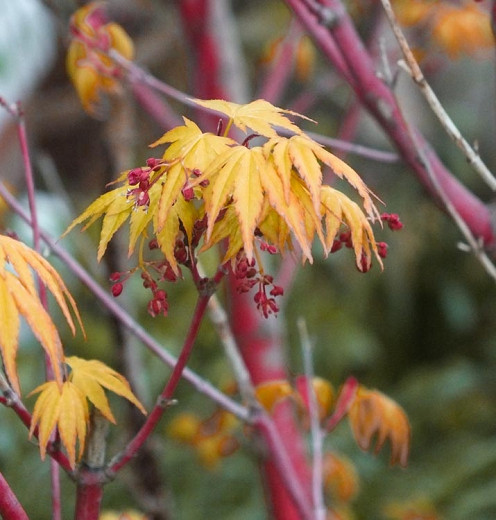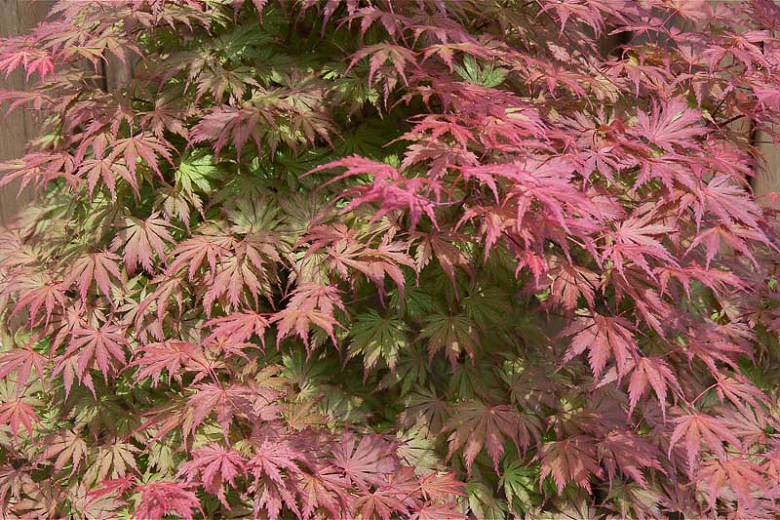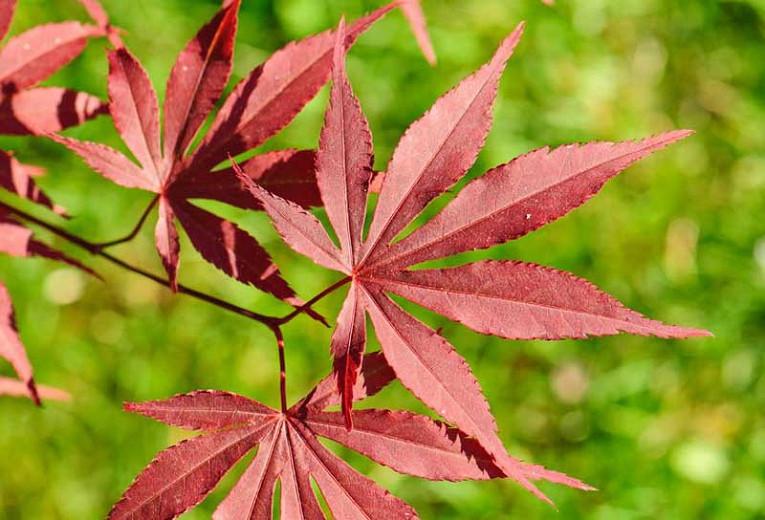Acer negundo (Box Elder)
Hardy and fast-growing, Acer negundo (Box Elder) is a suckering, vigorous, deciduous tree of upright habit with an irregular rounded canopy of widely spreading branches. The opposite, pinnately compound, light green leaves are composed of 3-7 leaflets, 6-15 in. long (15-37 cm), which turn a dull yellow in the fall. Box Elder is dioecious, with separate male and female trees. In spring, it produces pendulous pale green racemes that are followed by large dangling clusters of pale yellow samaras on female trees. They often persist on the tree well into winter. Many species of birds and squirrels feed on the seeds. The bark is light gray and smooth, but becomes furrowed into narrow ridges and darkens with age. Box Elder is often held in low regard as an ornamental tree in urban areas because of a few undesirable characteristics: brittle and weak wood, short life, susceptibility to box elder bugs, and trunk decay. The leaves fall untidily over a long period, as do the winged seeds, giving this species the reputation of being a "dirty tree". However, because of its fast growth, drought, and cold hardiness, Box Elder is popular in rural communities for street or ornamental plantings, and for shelterbelts. Box Elder's abundant sap can be made into a pleasant beverage. The Plains Indians used the sap as a source of syrup, and it is still used today, but the syrup is not as sweet as sugar maple syrup.
- Grows up to 30-50 ft. tall and wide (9-15 m).
- A full sun or part shade lover, this plant is easily grown in moist, well-drained soils. Box Elder is drought tolerant once established and can also withstand short periods of flooding.
- Perfect as a specimen plant in cottage gardens, city gardens, or containers.
- Low maintenance, this plant needs little pruning. Remove diseased, damaged, congested, or crossing shoots. Remove any shoots with green leaves.
- May be affected by scale insects, aphids, and verticillium wilt. The wood is weak and will break up in ice and wind.
- Propagate by seed or grafting.
- Native to most of North America.
- Find where Acer negundo species is invasive in the United States.
Requirements
| Hardiness | 2 – 10 |
|---|---|
| Heat Zones | 3 – 8 |
| Climate Zones | 1, 1A, 1B, 2, 2A, 2B, 3, 3A, 3B, 4, 5, 6, 7, 8, 9, 10, 12, 13, 14, 15, 16, 17, 18, 19, 20, 21, 22, 23, 24, A2, A3 |
| Plant Type | Trees |
| Plant Family | Acer – Maples |
| Exposure | Full Sun, Partial Sun |
| Season of Interest | Spring (Mid,Late)Summer (Early,Mid,Late)Fall |
| Height | 30' – 50' (9m – 15m) |
| Spread | 30' – 50' (9m – 15m) |
| Water Needs | Average |
| Maintenance | Low |
| Soil Type | Chalk, Clay, Loam, Sand |
| Soil pH | Acid, Alkaline, Neutral |
| Soil Drainage | Moist but Well-Drained, Well-Drained |
| Characteristics | Showy |
| Native Plants | United States, California, Midwest, Illinois, Indiana, Iowa, Kansas, Michigan, Minnesota, Missouri, Nebraska, North Dakota, Ohio, South Dakota, Wisconsin, Northeast, Connecticut, Delaware, Maine, Massachusetts, Maryland, New Hampshire, New Jersey, New York, Pennsylvania, Rhode Island, Vermont, Pacific Northwest, Idaho, Oregon, Washington, Rocky Mountains, Colorado, Montana, Utah, Wyoming, Southeast, Alabama, Arkansas, Florida, Georgia, Kentucky, Louisiana, Mississippi, North Carolina, South Carolina, Tennessee, Virginia, West Virginia, Southwest, Nevada, Arizona, New Mexico, Oklahoma, Texas |
| Tolerance | Clay Soil, Drought |
| Attracts | Birds |
| Garden Uses | Patio and Containers |
| Garden Styles | City and Courtyard, Informal and Cottage, Prairie and Meadow |
